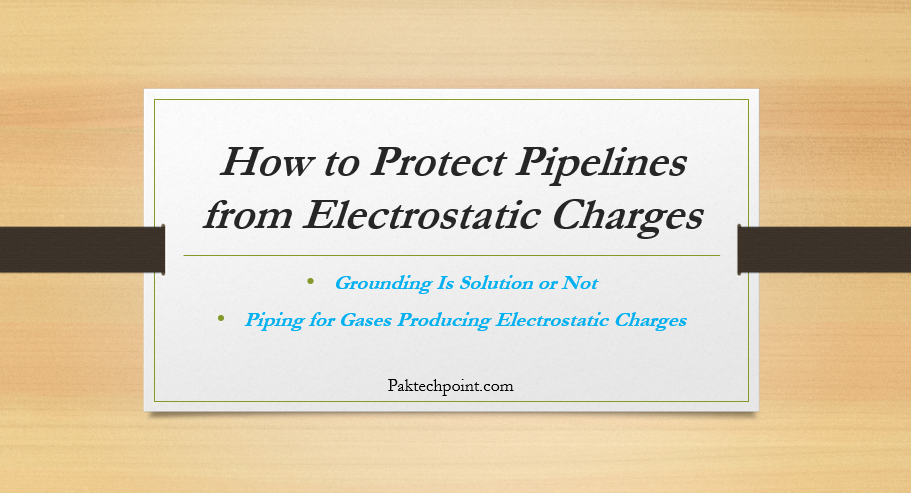Main keywords for this article are How to Protect Pipelines from Electrostatic Charges, Grounding Is Solution or Not, Piping for Gases Producing Electrostatic Charges.
How to Protect Pipelines from Electrostatic Charges – Grounding Is Solution or Not
- All overhead metal pipelines, extending from outside pipelines or equipment, whether containing flammable or combustible liquids or not, shall be adequately and effectively grounded at points of entrance in classified hazardous buildings or areas. This is necessary to prevent lightning discharges, either direct or induced, from entering the area by means of overhead piping and resulting in possible arcing to other piping, structural steel, or equipment within the area.
- Pipelines in hazardous areas may be inherently and effectively grounded for static protection purposes depending upon the conditions of installation, effects of corrosion, and maintenance efficiency. The normal metal-to-metal contact across flanged pipe joints and fittings, from pipes through pipe hangers to the structural steel, connections to grounded tanks and equipment, or other conducting surfaces, may provide satisfactory electrical connections. However, metal-to-metal contacts are not always sufficiently conductive, and it may be necessary to provide supplementary grounding and bonding. Whether supplementary grounding and bonding shall be provided for other cases, depends upon the testing.
- The inertness of glass and certain plastic materials to most chemicals have made them important as corrosion-resistant materials of construction for pipes and fittings, in the process industry. Installations of plastic or glass in the form of piping or lined metallic vessels shall be handled as vapor ducts.
Piping for Gases Producing Electrostatic Charges
- Gases, when not contaminated with impurities of foreign solid or liquid particles, are not subject to electrification in their flow. However, when a gas is contaminated, charges can be generated and, where it discharges from a pipe and impinges on an object, the pipe and object shall be electrically bonded together or otherwise suitably grounded, and shall be checked for compliance with 100 ohm value.
- Valve
Valve and stems of ball valves may be insulated from the valve body; seat rings, stem packing, and thrust washers provide the insulation. When such ball valves are used on pipelines handling liquids that have insufficient conductivity, they shall have their valve handles bonded to the valve body or connecting pipe to prevent static buildup on the stem and handle. Flangeless valves may also be electrically isolated from the piping system by gaskets and shall be bonded. - Other Devices
Flowmeters and other sensing or control devices may be inserted in a pipeline without adequate grounding. Metal instrument control tubing shall not be used as a grounding path. The bonding jumper shall be flexible, mechanically strong, and suitable for the environment.
We have discussed Main keywords for this article are How to Protect Pipelines from Electrostatic Charges, Grounding Is Solution or Not, Piping for Gases Producing Electrostatic Charges.
